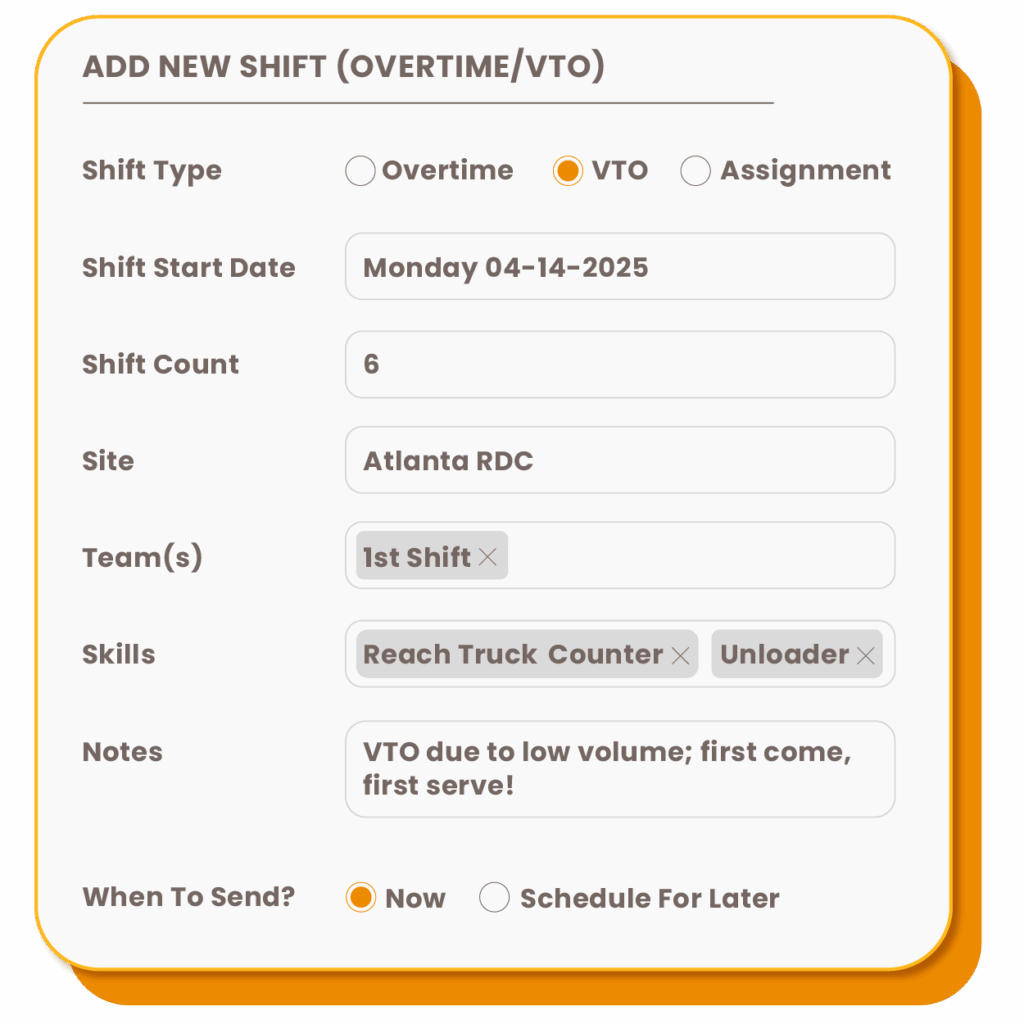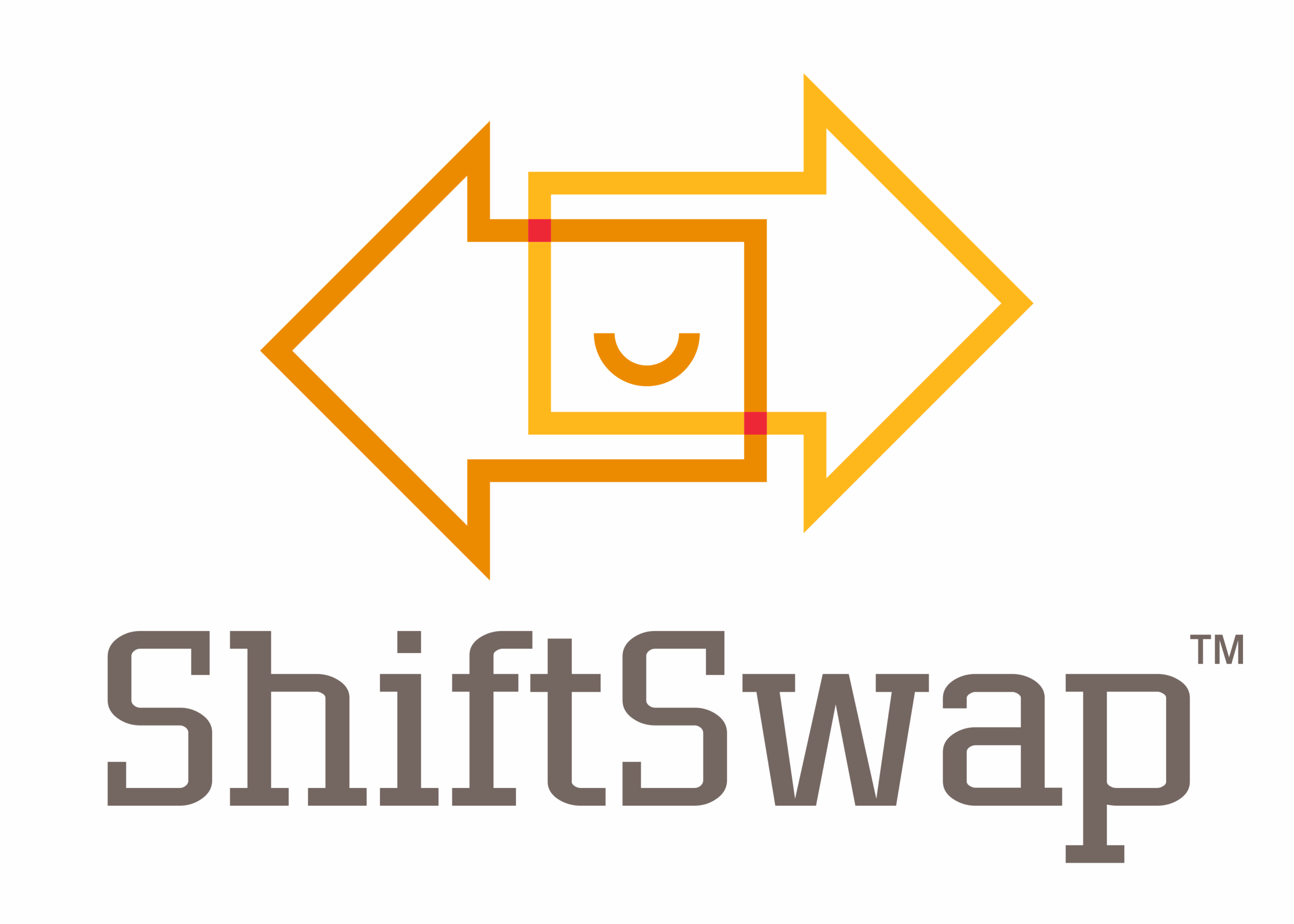ShiftSwap vs Workday
Both ShiftSwap™ and Workday offer workforce labor management tools, but they meet very different needs. Workday is an HR and HCM suite with scheduling, forecasting, and compliance modules. ShiftSwap specializes in fast, flexible shift coverage, reducing labor costs, improving attendance, and boosting retention in hourly operations.


Key Differences
All-in-One HR vs. Focused Workforce Management
Workday is a powerful enterprise platform for HR, finance, and talent management, offering broad administrative tools.
ShiftSwap is purpose-built for hourly workforce management, streamlining shift coverage, employee flexibility, and labor optimization without the complexity of enterprise systems.
Scalability & Accessibility
Workday works for large, multi-departmental organizations with dedicated HR teams.
ShiftSwap assists frontline operations that require quick and efficient staffing adjustments, including industries like logistics, retail, and warehouses.
Simplicity & Cost Transparency
Workday uses modular pricing, meaning costs can increase as additional HR, finance, or analytics tools are added.
ShiftSwap delivers clarity, simplicity, and predictable value for organizations focused on hourly shift management with no extra fees for features.
Flexibility & Demand Responsiveness
Workday excels in long-term workforce planning, but is not optimized for immediate, on-the-floor adjustments.
ShiftSwap aids dynamic operations, allowing managers to respond instantly to fluctuations in demand, weather disruptions, or absenteeism through instant SMS and shift coverage tools.
“ShiftSwap™ has been a substantial tool within our organization to assist with staffing. It provides the ability to preplan staffing, coordinate and communicate within your staff. With ShiftSwap, we were able to reduce our overtime from 900+ hours a week to under 10 hours a week.”
Barry Rodriguez, General Manager
measurable operational improvements
Performance Comparisons
Go-Live Time
ShiftSwap: Fast set up and onboarding, as little as 48 hours, means organizations can begin optimizing shift coverage and communication almost immediately.
Workday: Implementation typically takes several weeks to months, requiring configuration and IT involvement due to its enterprise-scale system integration.
Turnover Reduction
ShiftSwap: Customers report up to 70% decrease in turnover within the first 3 months of launch due to flexible shift management and autonomy.
Workday: Equipped with scheduling features and compliance, which help indirectly with retention, but there are limited published results about specific turnover rate improvements.
Absenteeism Improvement
ShiftSwap: Teams see 10-20% improvement in attendance, with fewer last-minute call-outs and better shift coverage through proactive and employee-led replacements.
Workday: Provides strong time-tracking and absence management tools to monitor attendance and send alerts, yet they are less immediate compared to ShiftSwap.
Employee Engagement
ShiftSwap: Efficiently align labor with demand, reducing unnecessary overtime and minimizing understaffing through quick shift coverage updates and shift posting tools.
Workday: Offers labor cost tracking and analytics, but cost savings often depend on additional module selection and complex configurations tailored to each enterprise.
Labor Cost Reduction
ShiftSwap: Reported 7% average increase in engagement (Gallup score) within the first year. Employees gain autonomy and satisfaction by grabbing and posting shifts.
Workday: Promotes engagement through HR tools, employee preferences, and shift visibility; however, it lacks employee-led shift flexibility that drives everyday engagement improvements.
Alerts & Notifications
ShiftSwap: Includes unlimited SMS and email alerts for the entire shift coverage process, ensuring leadership and employees stay connected and up to date.
Workday: Equipped with open shift boards, shift grab notifications, manager/employee alerts on mobile settings based on your modular plan.
- You are in an hourly/shift-driven setting (warehousing, logistics, retail) and want fast deployment, better shift coverage, and direct impact on turnover and labor cost.
- You want simple, reliable shift coverage, VTO features, instant SMS/email notifications, and features built specifically to reduce labor costs, turnover, and absenteeism.
- You prefer lower friction, faster ROI, clearer features focused on workforce flexibility and communication.
You are managing large, enterprise-scale operations with a strong need for unified HR, payroll, compliance, and scheduling modules.
You need advanced forecasting, labor optimization, or ML-driven scheduling tied to other HR and finance data.
You’re prepared for longer implementation, higher upfront investment, and more configuration.
keep exploring
Discover Why Operations Trust ShiftSwap
Stay in Touch & Try ShiftSwap Today
Join Our Weekly Email Blast
Want to experience the benefits of streamlined workforce management?
Quick 15-30 minute demo, providing a detailed walkthrough of the software.
Try out ShiftSwap at your site for __ days to test how it works at your operation.
Join Our Weekly Email Blast
Want to experience the benefits of streamlined workforce management?
Quick 15-30 minute demo, providing a detailed guide of the software.
Try out ShiftSwap at your site for __ days to test how it works at your operation.
workforce management insights
Articles & Resources
Choosing the Right Labor Management Platform for Employee Satisfaction
Selecting the right labor management platform is one of the most impactful…
Most Reliable Shift Management Platforms for Large Enterprises
Large enterprises face unique challenges in scheduling, coverage, and employee retention. That’s…
Top Workforce Management Softwares for Real-Time Shift Coverage
Workforce management tools are essential for streamlining operations, optimizing labor costs, and…
FAQs
shiftswap vs workday
What is ShiftSwap™, and how does it simplify employee scheduling?
ShiftSwap™ is a workforce management software that allows businesses to manage dynamic shifts. It simplifies complex shift management by enabling employees to post or claim shifts seamlessly through an intuitive platform while managers can adjust staffing levels in real time. ShiftSwap™ reduces manual scheduling errors and ensures businesses maintain optimal staffing.
How can workforce scheduling tools improve operational efficiency?
Workforce management tools like ShiftSwap™ improve operational efficiency by allowing leadership to efficiently match labor to demand and reduce administrative workloads. They help businesses save time, minimize errors, and effectively distribute employees across shifts to meet demand.
Why is real-time shift management important for companies?
Real-time shift management ensures staffing levels match demand, minimizes disruptions, and allows quick adjustments during unexpected changes, like severe weather, family emergencies, and more.
How does ShiftSwap™ contribute to better workforce management practices?
ShiftSwap™ streamlines workforce management by improving scheduling accuracy, enhancing communication between managers and employees, and enabling rapid shift adjustments. These features help businesses maintain flexibility and adapt to changing operational requirements.
How can workforce management tools like ShiftSwap™ save businesses money?
ShiftSwap™ helps businesses optimize labor costs by reducing overstaffing, minimizing absenteeism, and avoiding last-minute overtime expenses. With instant notifications, companies can allocate resources more efficiently.
What industries benefit the most from workforce management tools?
Industries with dynamic staffing needs, such as warehousing, retail, hospitality, manufacturing, and healthcare, can leverage ShiftSwap™ to maintain flexibility, improve employee satisfaction, and enhance operational efficiency.



